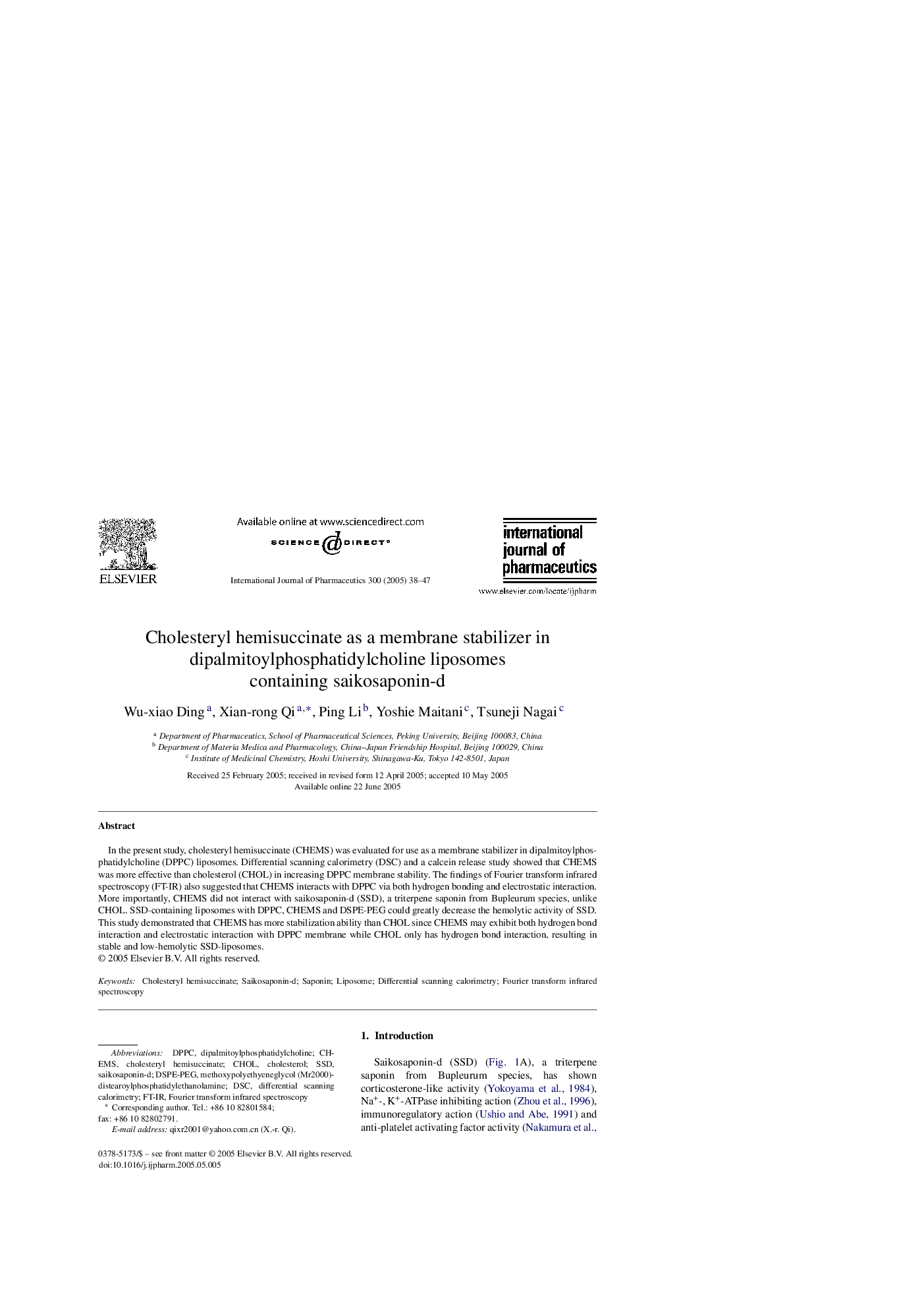| Article ID | Journal | Published Year | Pages | File Type |
|---|---|---|---|---|
| 9918679 | International Journal of Pharmaceutics | 2005 | 10 Pages |
Abstract
In the present study, cholesteryl hemisuccinate (CHEMS) was evaluated for use as a membrane stabilizer in dipalmitoylphosphatidylcholine (DPPC) liposomes. Differential scanning calorimetry (DSC) and a calcein release study showed that CHEMS was more effective than cholesterol (CHOL) in increasing DPPC membrane stability. The findings of Fourier transform infrared spectroscopy (FT-IR) also suggested that CHEMS interacts with DPPC via both hydrogen bonding and electrostatic interaction. More importantly, CHEMS did not interact with saikosaponin-d (SSD), a triterpene saponin from Bupleurum species, unlike CHOL. SSD-containing liposomes with DPPC, CHEMS and DSPE-PEG could greatly decrease the hemolytic activity of SSD. This study demonstrated that CHEMS has more stabilization ability than CHOL since CHEMS may exhibit both hydrogen bond interaction and electrostatic interaction with DPPC membrane while CHOL only has hydrogen bond interaction, resulting in stable and low-hemolytic SSD-liposomes.
Keywords
Related Topics
Health Sciences
Pharmacology, Toxicology and Pharmaceutical Science
Pharmaceutical Science
Authors
Wu-xiao Ding, Xian-rong Qi, Ping Li, Yoshie Maitani, Tsuneji Nagai,
